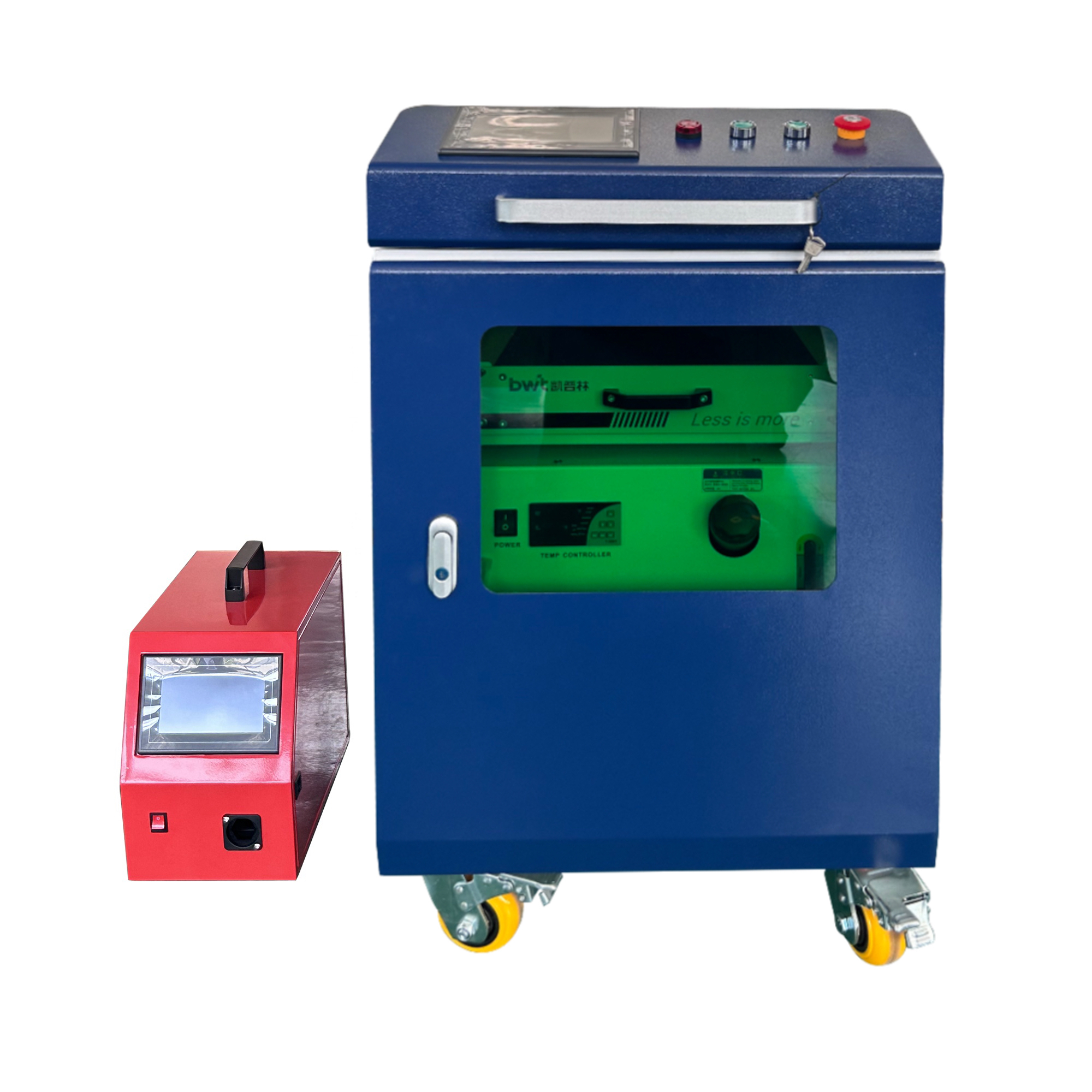Please Choose Your Language
Views: 0 Author: Site Editor Publish Time: 2025-06-09 Origin: Site











Laser welding has revolutionized modern manufacturing by offering precise, high-speed, and low-distortion joining of metals. A common question among professionals and enthusiasts is whether a laser welding machine requires shielding gas. The answer is yes; shielding gas plays a crucial role in laser welding processes. This article delves into the reasons for using shielding gas, the types available, their applications, and how to choose the right one for your needs.
In laser welding, shielding gas serves multiple essential functions:
Protection Against Atmospheric Contamination: The intense heat generated during laser welding creates a molten metal pool. Without shielding gas, this pool is exposed to atmospheric gases like oxygen, nitrogen, and hydrogen, leading to oxidation, porosity, and other defects in the weld.
Plasma Suppression: High-power laser beams can ionize metal vapors, forming a plasma cloud that absorbs and scatters the laser energy, reducing welding efficiency. Shielding gases help suppress this plasma formation, ensuring the laser beam reaches the workpiece effectively.
Lens Protection: Shielding gas flows can prevent metal vapors and spatter from contaminating the laser optics, maintaining beam quality and reducing maintenance needs.
Improved Weld Quality: By providing a stable and inert environment, shielding gases contribute to smoother weld surfaces, better mechanical properties, and reduced post-weld processing.
Different shielding gases offer varying benefits and are chosen based on the material being welded, desired weld characteristics, and cost considerations.
Properties: Inert, dense, and readily available.
Advantages:
Excellent protection against oxidation.
Suitable for a wide range of metals, including stainless steel, aluminum, and titanium.
Cost-effective compared to other inert gases.
Considerations: Argon's lower ionization energy can lead to plasma formation at high laser powers, potentially affecting beam penetration.

Properties: Inert, low density, high thermal conductivity.
Advantages:
Excellent plasma suppression due to high ionization energy.
Deeper weld penetration and higher welding speeds.
Ideal for high-power laser applications and materials like copper and aluminum.
Considerations: Helium is more expensive and requires higher flow rates due to its low density.
Properties: Semi-inert, cost-effective.
Advantages:
Suitable for welding certain stainless steels and carbon steels.
Provides a balance between cost and performance.
Considerations: Nitrogen can react with some metals, forming nitrides that may affect weld properties. Not recommended for materials like aluminum and titanium.
Properties: Reactive gas, often used in mixtures.
Advantages:
Enhances weld penetration and speed when used in small percentages with inert gases.
Considerations: Pure CO₂ can lead to oxidation and is generally not used alone in laser welding.
Choosing the appropriate shielding gas depends on several factors:
Material Type: Different metals react differently with gases. For instance, argon is suitable for aluminum, while nitrogen may be better for certain steels.
Welding Parameters: High-power lasers may benefit from helium's plasma suppression, whereas lower power settings might work well with argon.
Cost Considerations: Budget constraints may influence the choice between more expensive gases like helium and more affordable options like nitrogen.
Desired Weld Characteristics: Factors like weld appearance, penetration depth, and mechanical properties can guide gas selection.
| Gas Type | Plasma Suppression | Oxidation Protection | Cost | Suitable Materials |
|---|---|---|---|---|
| Argon | Moderate | Excellent | Low | Stainless steel, aluminum, titanium |
| Helium | Excellent | Good | High | Copper, aluminum, high-power applications |
| Nitrogen | Moderate | Fair | Low | Certain steels |
| CO₂ | Poor | Poor | Low | Used in mixtures for steels |
While some low-power or specialized laser welding applications might operate without shielding gas, most processes benefit significantly from its use to ensure weld quality and equipment longevity.
No, the choice of shielding gas depends on the material being welded and the specific requirements of the welding process. Using an inappropriate gas can lead to weld defects or equipment damage.
Shielding gas protects the weld pool from atmospheric contamination, reduces plasma formation, and can influence weld penetration and appearance. The right gas ensures strong, clean, and defect-free welds.
Yes, gas mixtures like argon-helium or argon-nitrogen can be used to combine the benefits of different gases, tailoring the shielding environment to specific welding needs.
Gas flow rates depend on factors like the type of gas, welding speed, and joint configuration. Consulting the laser welding machine manufacturer's guidelines and conducting preliminary tests can help establish optimal flow rates.
Shielding gas is an integral component of the laser welding process, directly impacting weld quality, equipment performance, and overall efficiency. By understanding the roles and characteristics of different shielding gases, users can make informed decisions to optimize their laser welding machine operations.